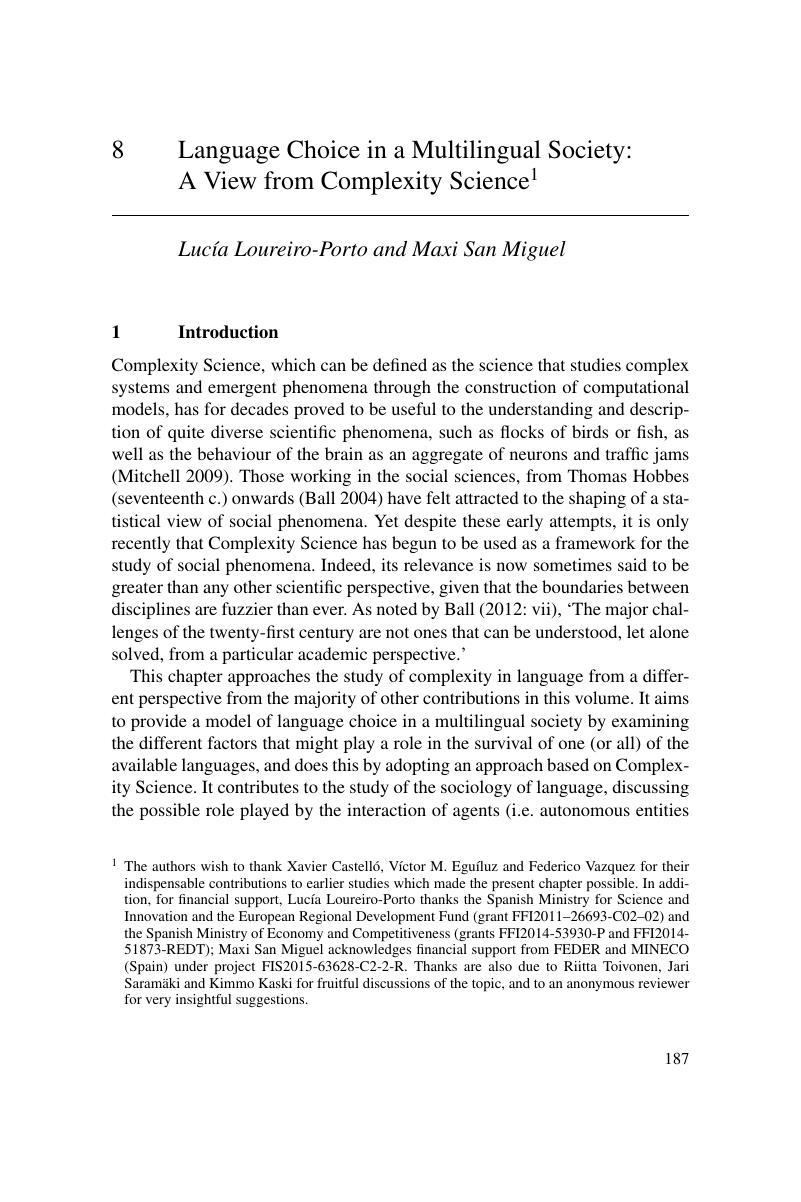Book contents
- Complexity in LanguageDevelopmental and Evolutionary Perspectives
- Cambridge Approaches to Language Contact
- Complexity in Language
- Copyright page
- Contents
- Figures
- Tables
- Contributors
- Acknowledgments
- 1 Complexity in Language: A Multifaceted Phenomenon
- 2 How to Explain the Origins of Complexity in Language: A Case Study for Agreement Systems
- 3 Complexity in Speech: Teasing Apart Culture and Cognition
- 4 A Complex-Adaptive-Systems Approach to the Evolution of Language and the Brain
- 5 Evolutionary Complexity of Social Cognition, Semasiographic Systems, and Language
- 6 To What Extent Are Phonological Inventories Complex Systems?
- 7 A Complexity View of Ontogeny as a Window on Phylogeny
- 8 Language Choice in a Multilingual Society: A View from Complexity Science1
- 9 Complexity and Language Contact: A Socio-Cognitive Framework
- Index
- References
8 - Language Choice in a Multilingual Society: A View from Complexity Science1
Published online by Cambridge University Press: 04 July 2017
- Complexity in LanguageDevelopmental and Evolutionary Perspectives
- Cambridge Approaches to Language Contact
- Complexity in Language
- Copyright page
- Contents
- Figures
- Tables
- Contributors
- Acknowledgments
- 1 Complexity in Language: A Multifaceted Phenomenon
- 2 How to Explain the Origins of Complexity in Language: A Case Study for Agreement Systems
- 3 Complexity in Speech: Teasing Apart Culture and Cognition
- 4 A Complex-Adaptive-Systems Approach to the Evolution of Language and the Brain
- 5 Evolutionary Complexity of Social Cognition, Semasiographic Systems, and Language
- 6 To What Extent Are Phonological Inventories Complex Systems?
- 7 A Complexity View of Ontogeny as a Window on Phylogeny
- 8 Language Choice in a Multilingual Society: A View from Complexity Science1
- 9 Complexity and Language Contact: A Socio-Cognitive Framework
- Index
- References
Summary

Information
- Type
- Chapter
- Information
- Complexity in LanguageDevelopmental and Evolutionary Perspectives, pp. 187 - 217Publisher: Cambridge University PressPrint publication year: 2017
References
Accessibility standard: Unknown
Why this information is here
This section outlines the accessibility features of this content - including support for screen readers, full keyboard navigation and high-contrast display options. This may not be relevant for you.Accessibility Information
- 3
- Cited by
